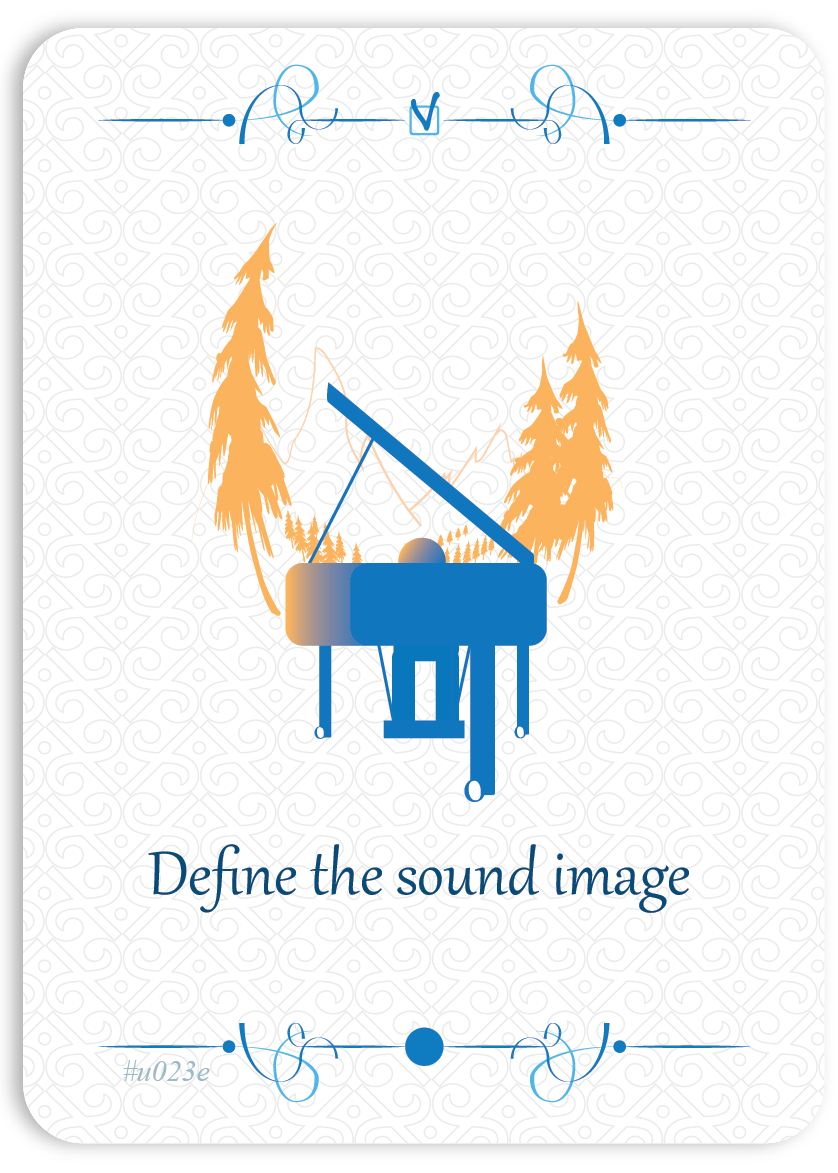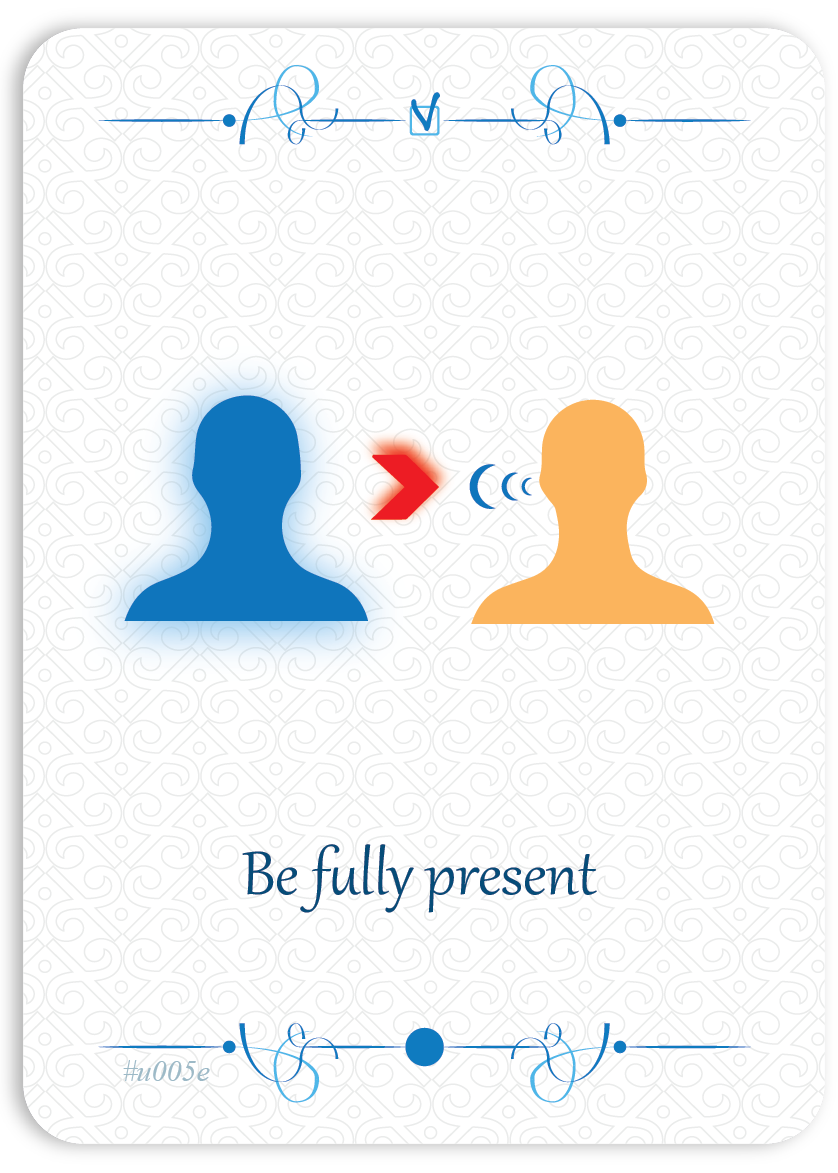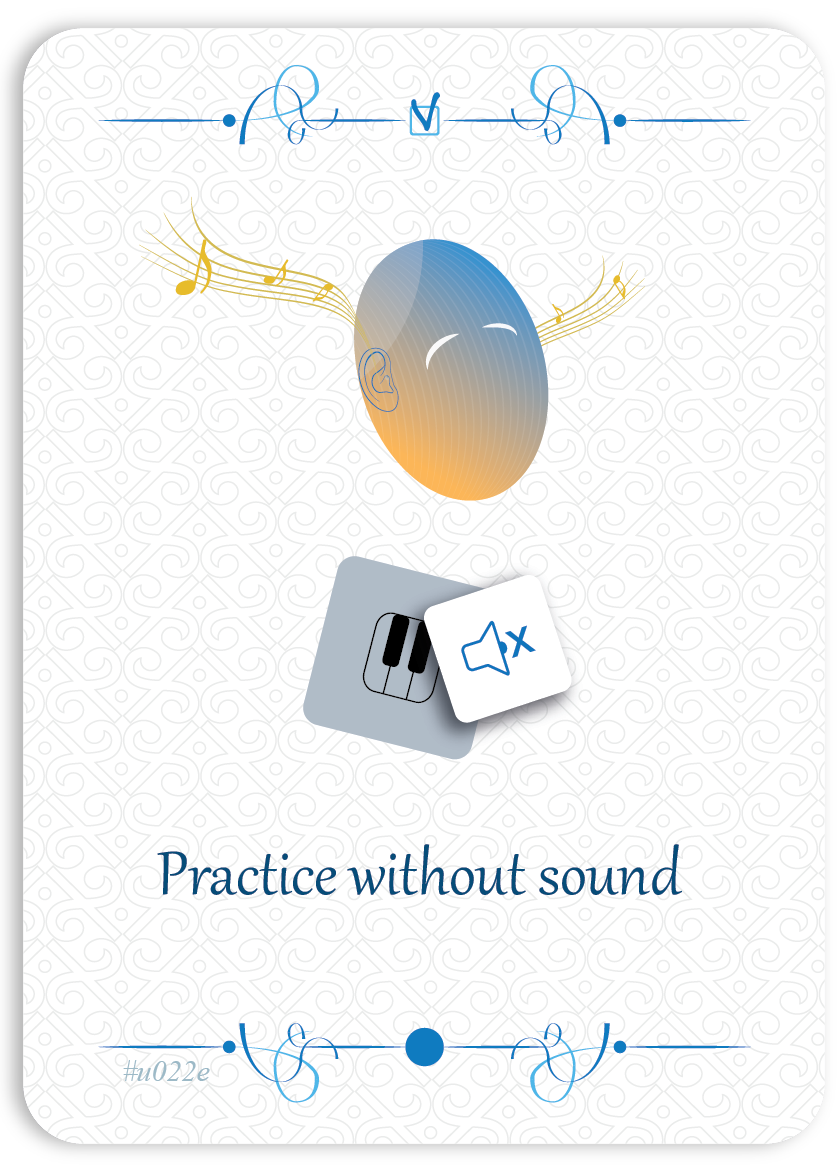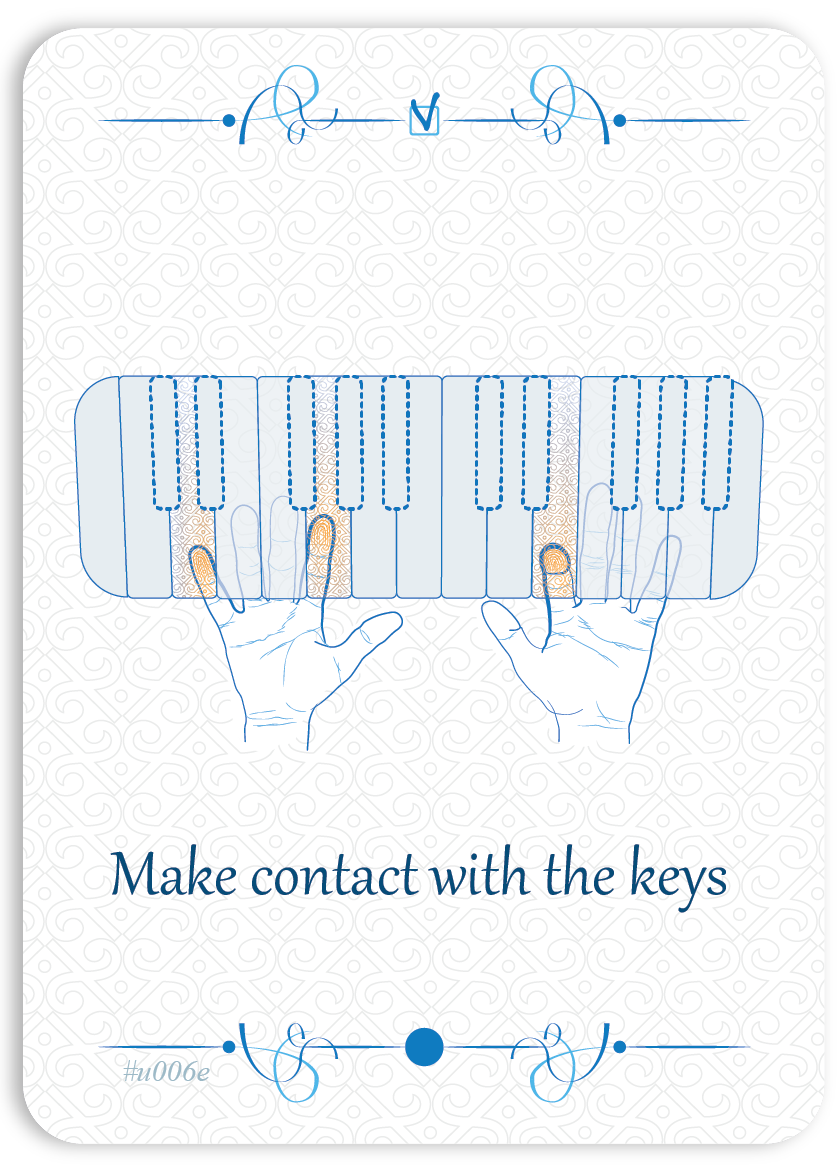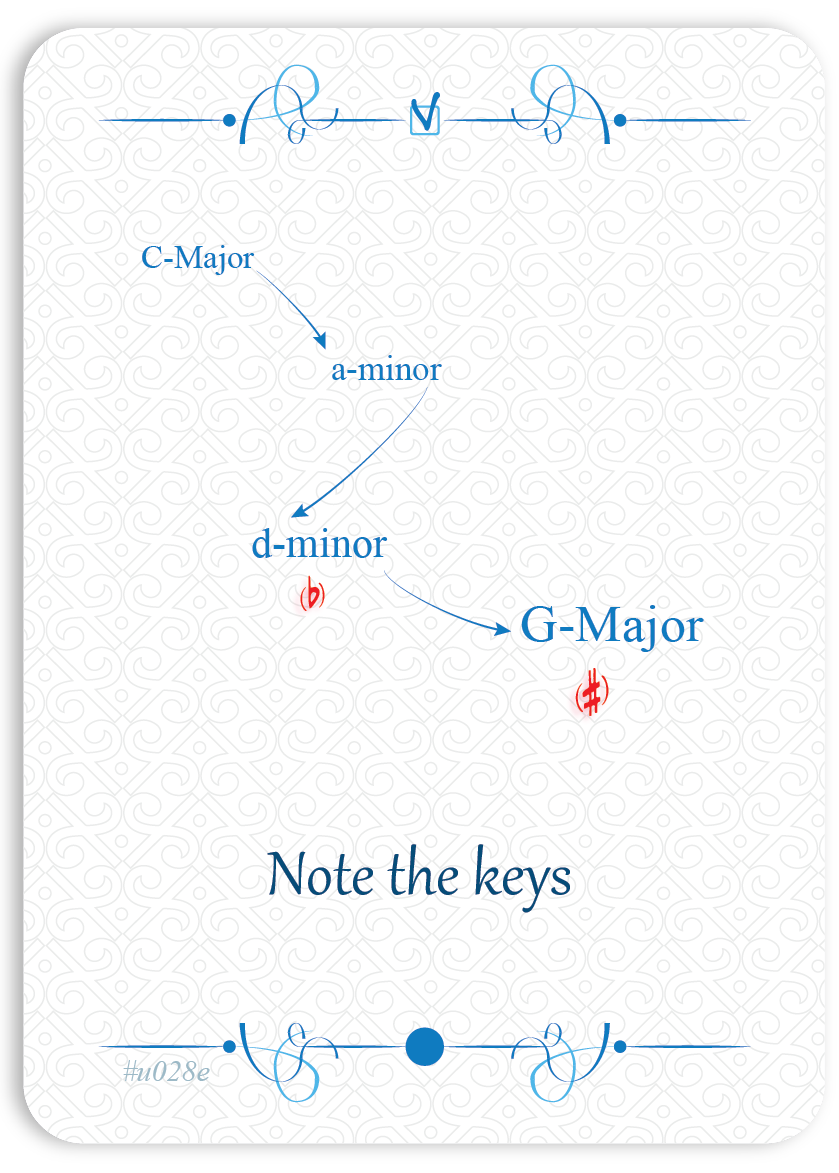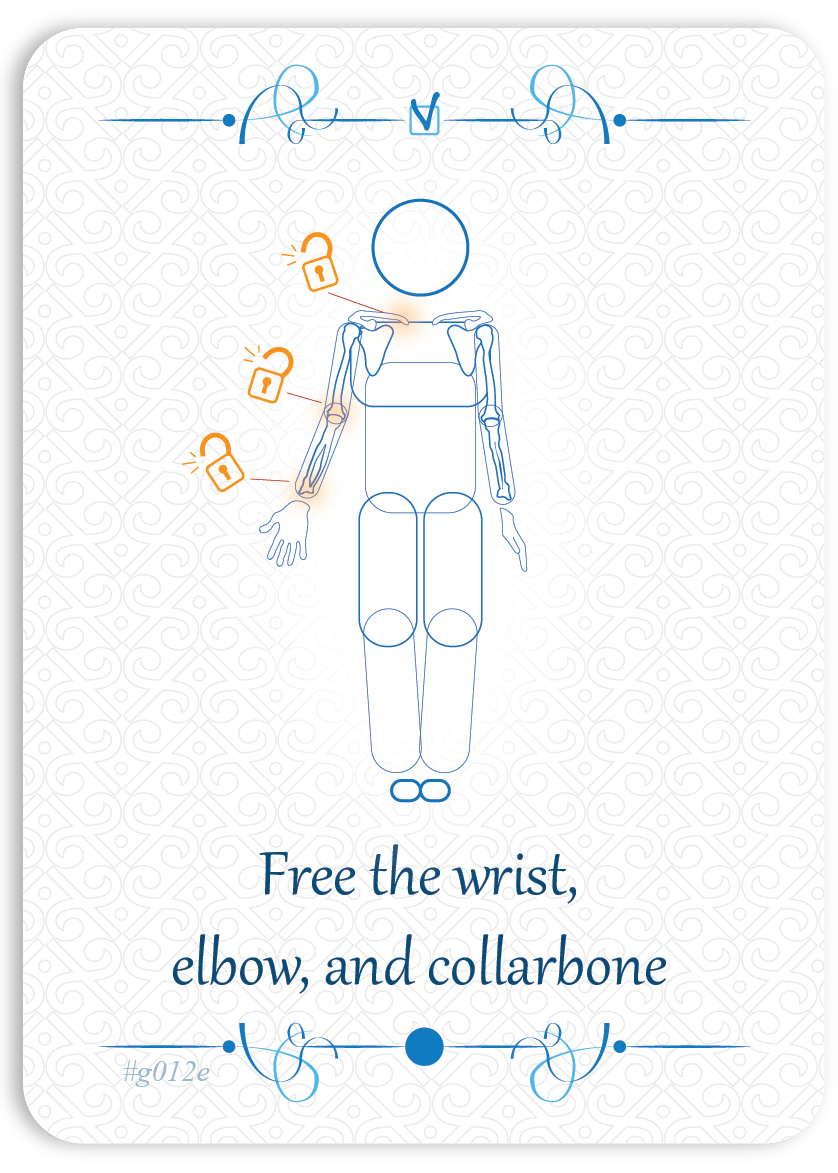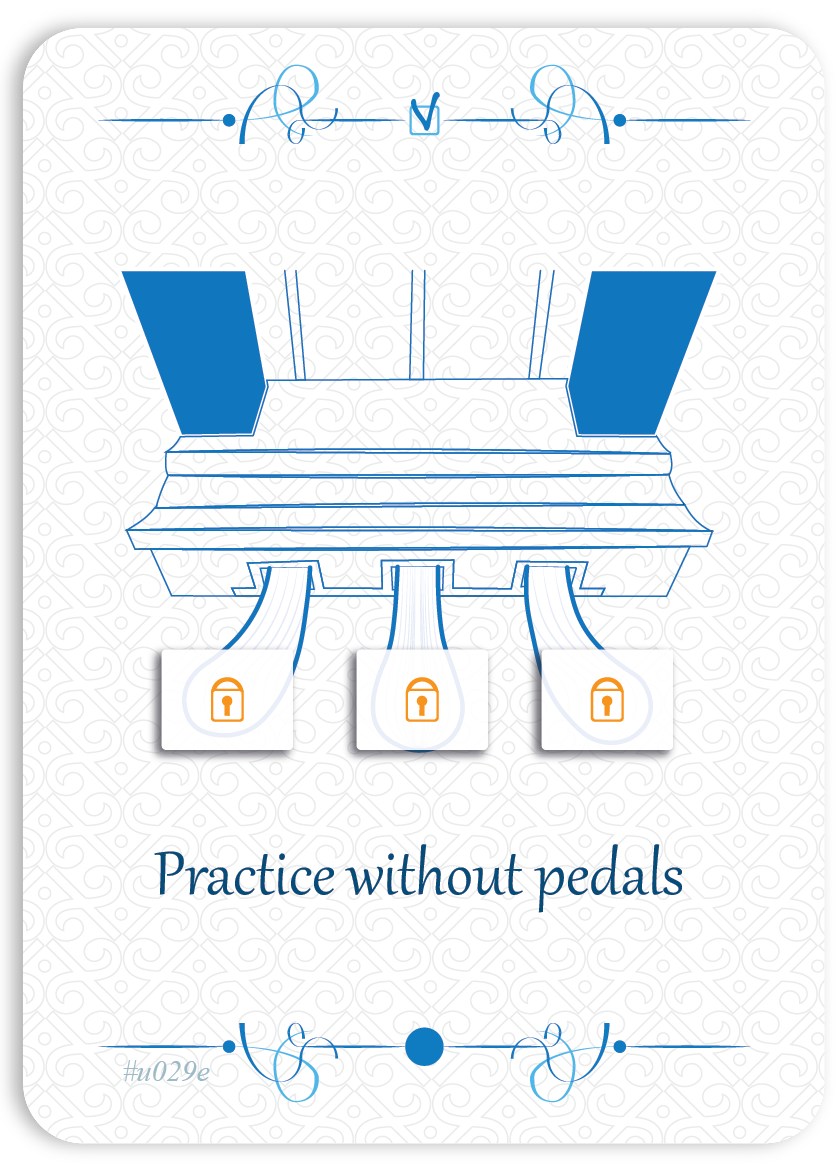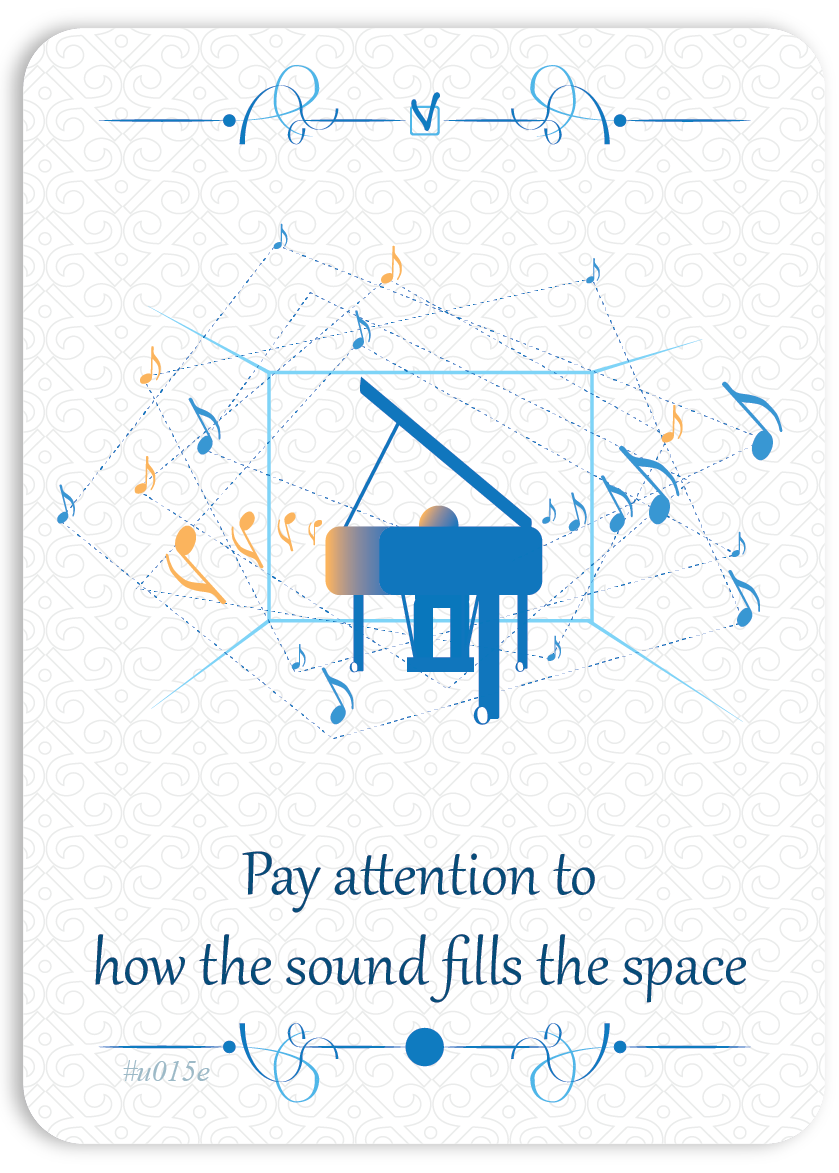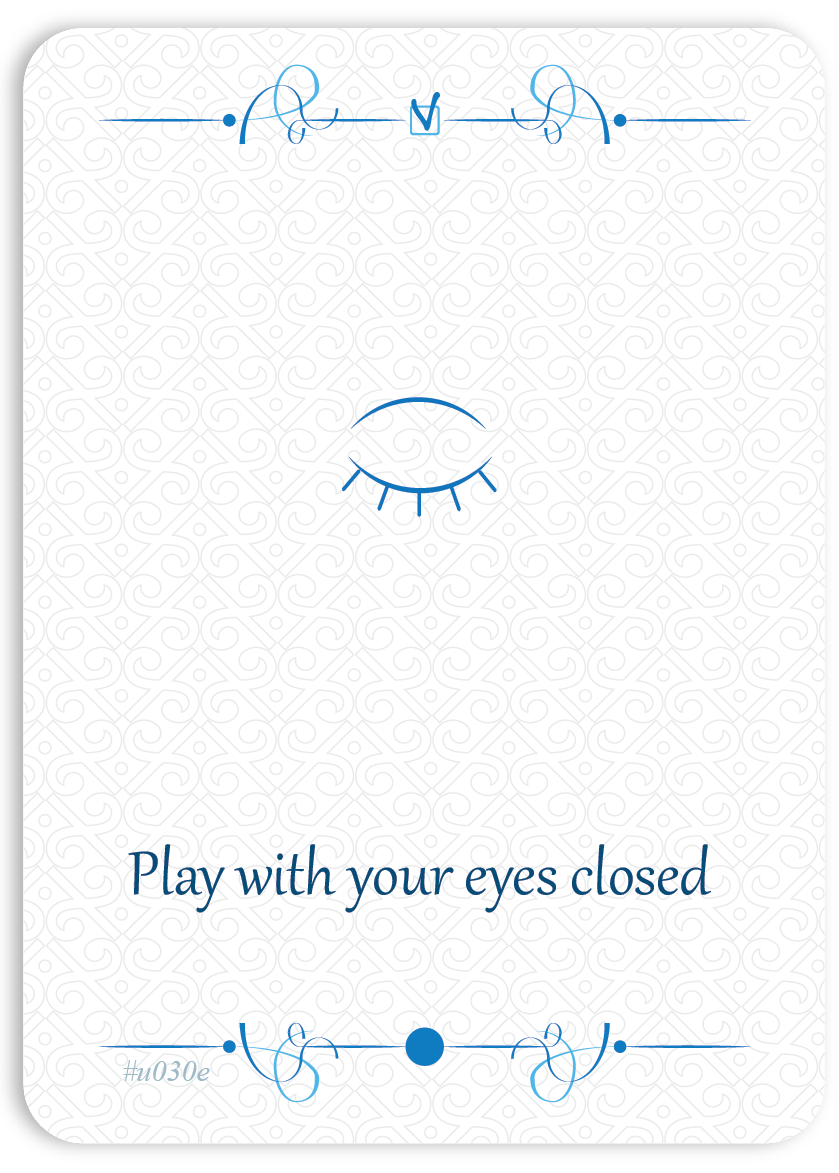Cheking tips | ★★★
In this deck1, you will find practice tips that require special attention and are presented in a random order. The tips below are extremely useful for deepening your understanding of a piece you have already started, or for assessing the strength of your learning skills, especially a few weeks before an event such as a concert.
- Choose a short passage of your piece (2 to 8 measures) and apply the exercise suggested on the card, as described below.
- ⚠ If the card doesn’t suit you, move on and continue practicing with other exercises in the deck.
______________
1 This deck contains 14 cards and is carefully shuffled each time it is viewed.
→ Swipe from one card to the next by sliding your finger across the card you see.
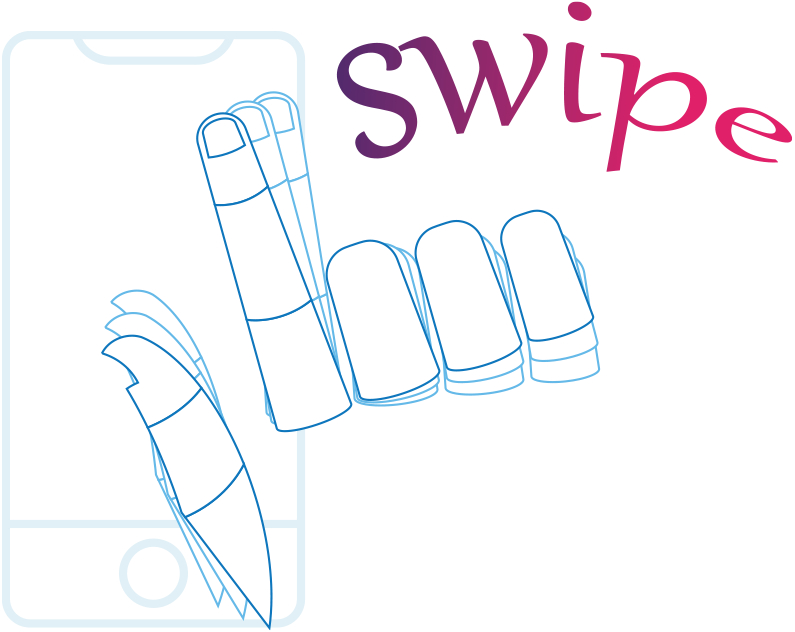
-
Define the sound image
★★★→ Have I developed a narrative?
The “sound image” corresponds to what the music represents to you.
Ask yourself what “story” lies at the heart of the fragment you are working on:Does it evoke a particular emotion for you?
Does it remind you of real-life events?
At this stage of learning, the goal is to articulate the “deep” motivation that makes you want to play this fragment. This motivation is sometimes called the “artistic task”.
Consider what you want to communicate to your audience through this section. Even if your “narrative” doesn’t directly reach them, the clarity of your intention will inevitably engage their imagination.
-
Be fully present
★★★→ Am I able to listen to myself with an "external ear"?
You have probably already noticed that when we play in the presence of someone else, our performance can change significantly. It may become more expressive, or perhaps more tense, because our awareness of being observed intensifies.
So why not be fully present while practicing, since this state of attention will naturally occur when performing on stage? By getting used to entering this heightened state from the start of practice, the difference between "at-home" playing and stage playing will be minimal, helping us feel more comfortable in public.
As Robert Schumann 1 advised: "It does not matter who is listening when you play. Always play as if you were in the presence of a master."
______________
1 SCHUMANN, R. (1848). Advice to Young Musicians. -
Practice without sound
★★★→ Does playing with my ears covered unsettle me?
To introduce an additional challenge, try covering your ears with noise-canceling headphones, a construction helmet, or even earplugs. This uncommon practice will help you focus more intensely on your inner singing, your interaction with the keyboard, and your movements.
If you have a digital piano, practice your piece—or just a section of it—with the sound turned off.
-
Make contact with the keys
★★★→ Am I able to pay attention to the contact with the keys?
Now, focus all your attention on how your fingers meet the keys.
- What is the temperature of the keys? What is their texture?
- Are there certain keys that feel less clear or responsive than others?
-
Note the keys
★★★→ Am I aware of the tonal centers?
Identifying and becoming conscious of the tonal structure is essential for creating a sort of mental map that will guide your playing.
Mark the different keys of the piece or fragment you are working on in your score.
Example : C major, A minor, F major, etc.Play and say the keys out loud.
Indicate the various harmonies that occur between tonal centers, using chord symbols if possible.
-
Free the wrist, elbow, and collarbone
★★★→ Are my joints flexible?
Check that your joints are fully mobile and that your muscle tone is not excessive.
To relax the muscles between your head and shoulders (the trapezius muscles), gently lower your shoulders and move your head to the left, then to the right, twice.
Next, make small circular movements to check the mobility of your shoulder blades and collarbones.
Finally, ensure that your elbows and wrists can move freely without resistance.Continue to pay attention to this overall mobility while playing your piece.
-
Practice without pedals
★★★→ Have I practiced playing without the pedals?
To better memorize the lengths of the notes and the distances between the keys, practice without using the sustain pedal or the soft pedal (also called the “Una Corda” pedal).
-
Pay attention to how the sound fills the space
★★★→ Am I able to hear the sound in space?
In certain spaces (rooms or halls), you can notice the phenomenon of reverberation – a kind of very quick echo.
Try to focus your attention on this phenomenon while playing your piece or the passage you are currently working on.
If your instrument is in a "dry" acoustic environment where this effect is not audible, try to imagine the space where you will perform next. This could be a practice room or a concert hall. This exercise will train you to adapt to different acoustics.
-
Play with your eyes closed
★★★→ Am I able to play with my eyes closed?
This exercise is useful for strengthening several aspects of your playing:
- Your memory
- Your inner singing
- Your sense of the keyboard
Close your eyes and play slowly several times until you feel comfortable at a slow tempo.
Repeat the exercise at a slightly faster tempo.
This exercise can be challenging, so if you encounter difficulties, it is better not to rush toward the final tempo.
Introducing a small disruptive element during your practice can be beneficial, while keeping it realistic: on stage, the constraint of playing with eyes closed will not be present.
Discover the tips :
Simple ★✩✩
Intermediate ★★✩
Advanced ★★★
Super Deck
